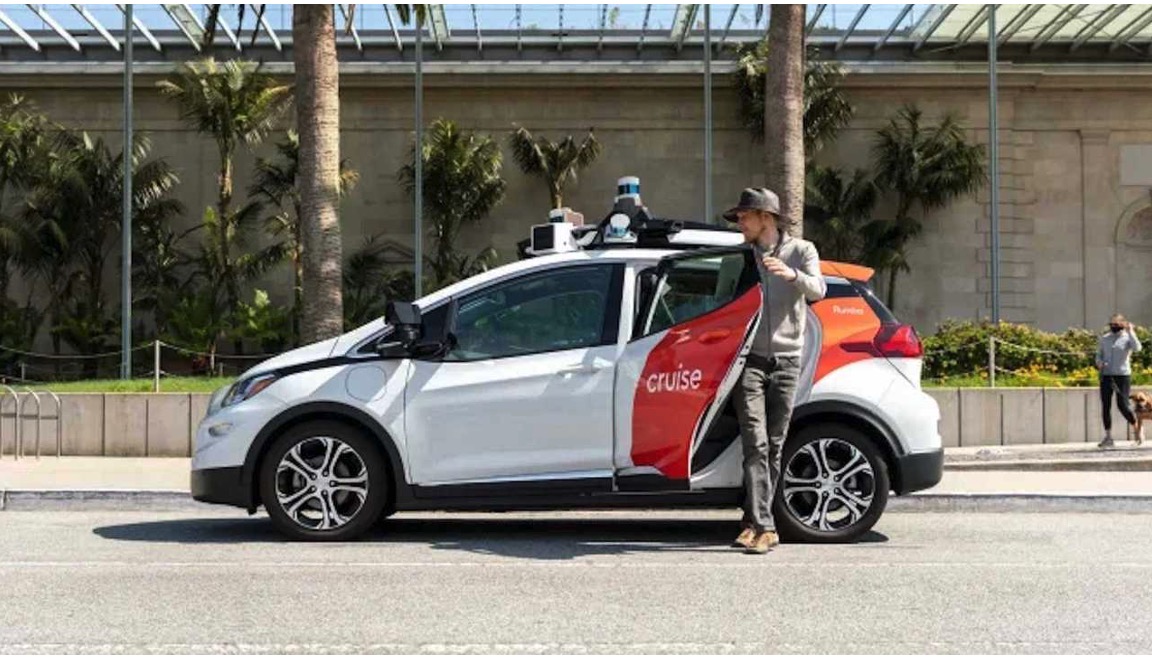Comments
ACCORDING TO LIZ - They went and approved it! On August 10, the California Public Utilities Commission okayed 24/7 commercial use of self-driving vehicles by Cruise and Waymo in San Francisco by a 3-1 vote.
The next night ten robo-cars were "paralyzed" on narrow streets in the North Beach area, while stalled Cruise cars snarled traffic near a music festival in Golden Gate Park.
The company blamed the latter incident on wireless bandwidth constraints due to the event causing delayed connectivity. Given this appears to actually be a case of no connectivity, how well will these cars operate in a full-on emergency with police and fire radios at max, and everyone else trying to contact their loved ones at the same time?
Several hundred residents along with public safety officials had strongly opposed expanding the use of driverless vehicles at a contentious meeting earlier this month. Despite multiple complaints of traffic jams, blocking of emergency vehicles and crashes, and gut-level descriptions of the autonomous cars as “menacing,” “creepy” and “an existential threat to drivers and pedestrians,” there was no stopping the approval.
Even testimony by the executive director of the San Francisco County Transportation Authority and the director of the city’s planning department this spring that the Cruise car violations “would preclude any teenager from getting a California Driver’s License” was not enough to block a favorable ruling for Cruise and Waymo.

The two multibillion-dollar companies had clearly used more effective powers of persuasion to convince the Commissioners. And John Reynolds, who voted in favor, had served as managing counsel at Cruise as recently as January 2022.
The promise of such vehicles was to reduce the collision carnage on the streets and highways with vehicular deaths last year of almost 43,000. But without adequate supervision, what’s to say that they won’t create more havoc?
Single-use vehicles will only add more cars to already congested streets. Even if they are electric, all the other vehicles jammed up behind them will continue to pollute, and emissions from idling engines are more toxic than those of free-flowing traffic.
Cruise, Waymo and similar companies add to the demand for electric cars at a time when Americans are starting the change-over to less polluting vehicles, putting more pressure on the supply chain – especially for the lithium, cobalt, terbium, dysprosium and neodymium needed for batteries – and drive up prices for the rest of us.
Their manufacture creates other forms of pollution and increased power demands. And what is their lifespan? Should we expect to see heaps of discarded Waymo-mobiles in our already overflowing dumps in coming years?
Certainly some of the bugs will get worked out, but it's going to take time. And the public is notoriously fickle about comfort levels with technology. The first deaths...
The consequences can be serious with robots weighing more than a ton. What happens when autonomous vehicles attempt to maneuver in snow, in whiteout conditions, in a dust storm?
How will their scanning mechanisms operate if just being close to a public event can cause paralysis?
What will earthquakes, hurricanes, and tornadoes do to their delicately-calibrated electronics?
And then there are hacking concerns.
Teenagers have run rampant over computer security protocols for over a generation. Untold numbers of entities have faced ransom demands in recent years with access to their own systems as hostage. Foreign operatives have already messed with the infrastructure of utility systems and government agencies.
What “fun” it will be for someone to take control of robo-taxis in Los Angeles and weaponize them, turn them against each other, against pedestrians. Against the City itself.
(Liz Amsden is a contributor to CityWatch and an activist from Northeast Los Angeles with opinions on much of what goes on in our lives. She has written extensively on the City's budget and services as well as her many other interests and passions. In her real life she works on budgets for film and television where fiction can rarely be as strange as the truth of living in today's world.)






